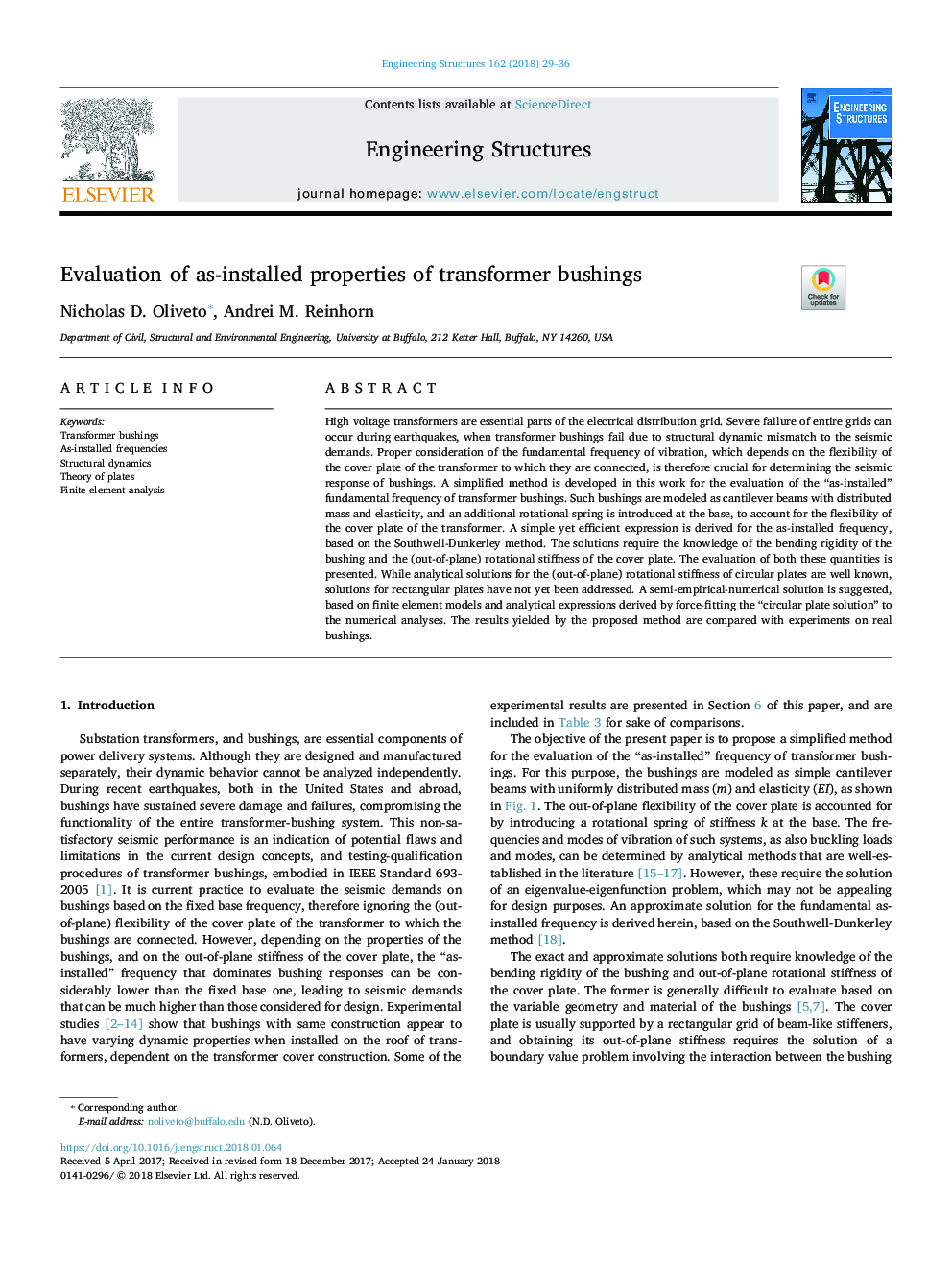| Article ID | Journal | Published Year | Pages | File Type |
|---|---|---|---|---|
| 6737885 | Engineering Structures | 2018 | 8 Pages |
Abstract
High voltage transformers are essential parts of the electrical distribution grid. Severe failure of entire grids can occur during earthquakes, when transformer bushings fail due to structural dynamic mismatch to the seismic demands. Proper consideration of the fundamental frequency of vibration, which depends on the flexibility of the cover plate of the transformer to which they are connected, is therefore crucial for determining the seismic response of bushings. A simplified method is developed in this work for the evaluation of the “as-installed” fundamental frequency of transformer bushings. Such bushings are modeled as cantilever beams with distributed mass and elasticity, and an additional rotational spring is introduced at the base, to account for the flexibility of the cover plate of the transformer. A simple yet efficient expression is derived for the as-installed frequency, based on the Southwell-Dunkerley method. The solutions require the knowledge of the bending rigidity of the bushing and the (out-of-plane) rotational stiffness of the cover plate. The evaluation of both these quantities is presented. While analytical solutions for the (out-of-plane) rotational stiffness of circular plates are well known, solutions for rectangular plates have not yet been addressed. A semi-empirical-numerical solution is suggested, based on finite element models and analytical expressions derived by force-fitting the “circular plate solution” to the numerical analyses. The results yielded by the proposed method are compared with experiments on real bushings.
Related Topics
Physical Sciences and Engineering
Earth and Planetary Sciences
Geotechnical Engineering and Engineering Geology
Authors
Nicholas D. Oliveto, Andrei M. Reinhorn,
